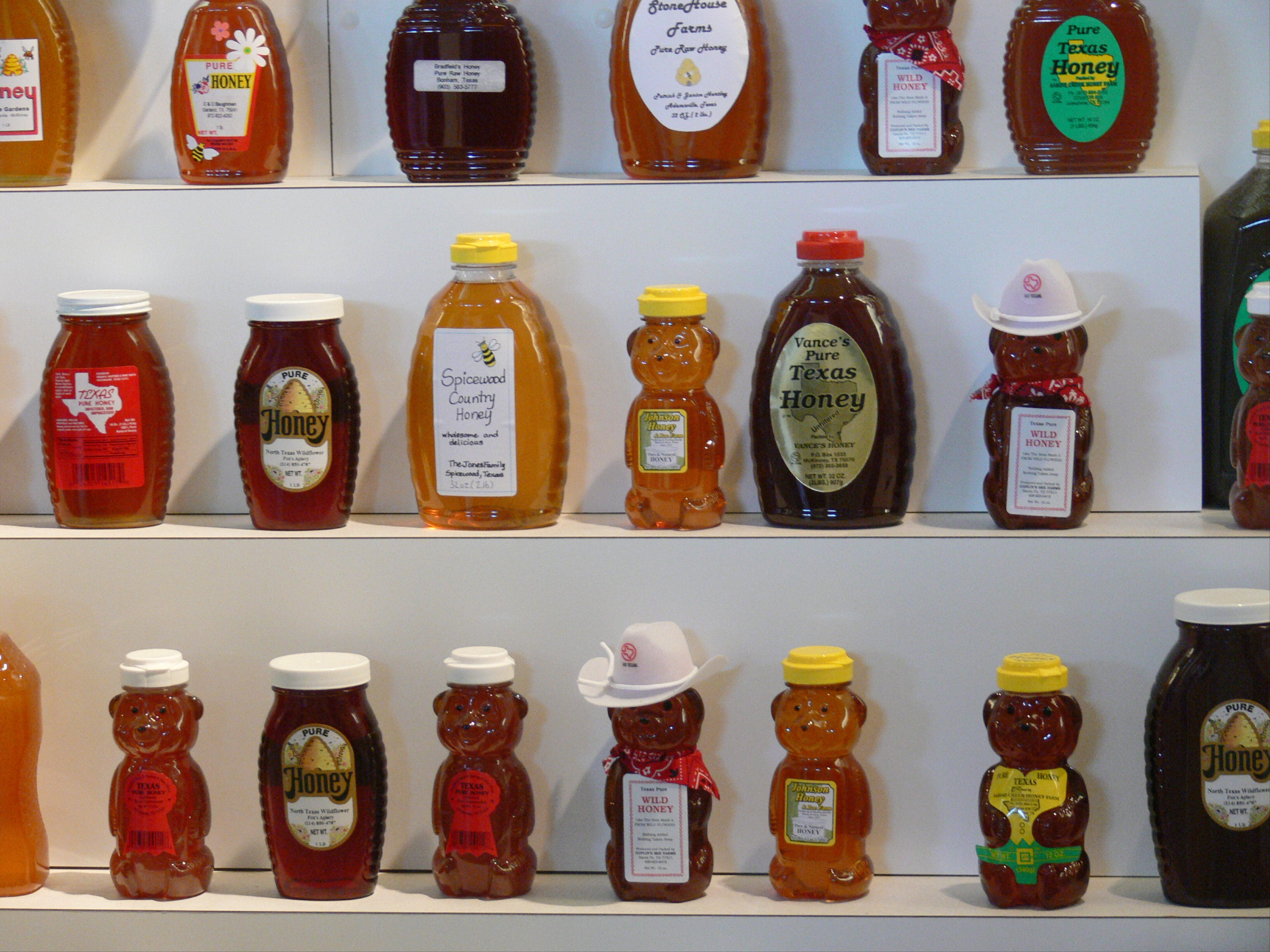The last thing I need to tell you is how our precious honey gets from our hive to your local supermarket. Obviously I will be focusing on bees that live on farms.
 |
| https://upload.wikimedia.org/wikipedia/commons/4/42/Texas_State_Fair_honey.jpg |
When bees fill all the honeycomb cells with nectar, they cover and seal it with a wax cap. Once all the combs are capped, the bee-keeper can collect the honey. In order not to be stung, the bee-keeper wears protective clothes. Next when the combs are clear of bees, he takes what is called the supers out of the hive and removes them to a workroom. Here the wax cappings are scraped off with a hot sharp knife and the combs are placed in an extractor. This machine whirls the uncapped combs round and round, and flings the honey out of the wax. The honey then runs off into a pail below. Little or no damage is done to the delicate honeycomb by this process. The clean combs are then returned to the hive for the bees to fill up with honey again. The extracted honey is strained and allowed to stand for a few hours to let the air bubbles rise to the top and escape. It is then poured into jars. Some of it is allowed to granulate, crystallize or become hard and some is left runny and clear. Nearly all honey granulates sooner or later, because the glucose in it separates into crystals, thickening and becoming lighter in colour.
You may have noticed in your local supermarket how many colours honey comes in. Its colour depends on the kind of flower from which it comes from. For the same reason honey tastes different to.
No comments:
Post a Comment